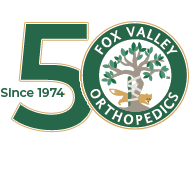To Learn More
(630) 584-1400


De Quervain Tenosynovitis, also known as De Quervain's Tendinitis or De Quervain's Syndrome, is a condition that affects the tendons of the thumb. The tendons in this area become inflamed and swollen, causing pain extending into the wrist and restricted movement. De Quervain Tenosynovitis is primarily triggered by overuse or repetitive motions.
Below are some of the most common symptoms associated with De Quervain Tenosynovitis. It is not unlikely for patients to experience more than one symptom.
Typically, imaging tests are unnecessary to determine if you have this condition.
Your provider will perform a physical examination if you feel pain when pressure is applied on the thumb side of your wrist. From there, you may be asked to complete a Finkelstein
test, which involves bending your thumb across the palm of your hand and bending your fingers down over your thumb. After your fingers are in place, you bend your wrist towards your little finger. If you experience pain on the thumb side of your wrist with this movement, you may have de Quervain's Tenosynovitis.
Pain and inflammation can often be relieved without surgery. Doctors will rely on non-surgical treatment options first before recommending surgery.
Some individuals seek the care of a physical or occupational therapist to help them perform exercises that can strengthen their muscles and reduce pain. These specialists can also give additional suggestions on relieving stress on your wrists.
In situations where non-surgical treatments for de Quervain's disease do not provide adequate relief, doctors may recommend surgical intervention. This is typically done when the pain becomes too severe and affects daily activities. The surgical approach for de Quervain's is called a "release" procedure. A small incision is made on the side of your wrist near the base of your thumb. The surgeon alleviates the pressure and friction over the swollen tendons. The alleviated pressure allows the tendon to move freely without pain. De Quervain's Tenosynovitis surgery is performed on an outpatient basis.
After surgery, you may need wrist and hand therapy to regain strength and improve your movement.
Contact our team of orthopedists today if you are experiencing pain in your thumbs or wrist. We will diagnose the exact cause of your pain and determine the best course of treatment.
Find a location near you and reach out to schedule an appointment today!
To Learn More
(630) 584-1400Our specialists have the knowledge & experience to get you back to living life.
Providing excellent care, innovative surgeries, at up to 60% less out of pocket cost.
Welcome to Fox Valley Orthopedics’ patient portal.
Providing excellent care with the convenience of being close to home.
